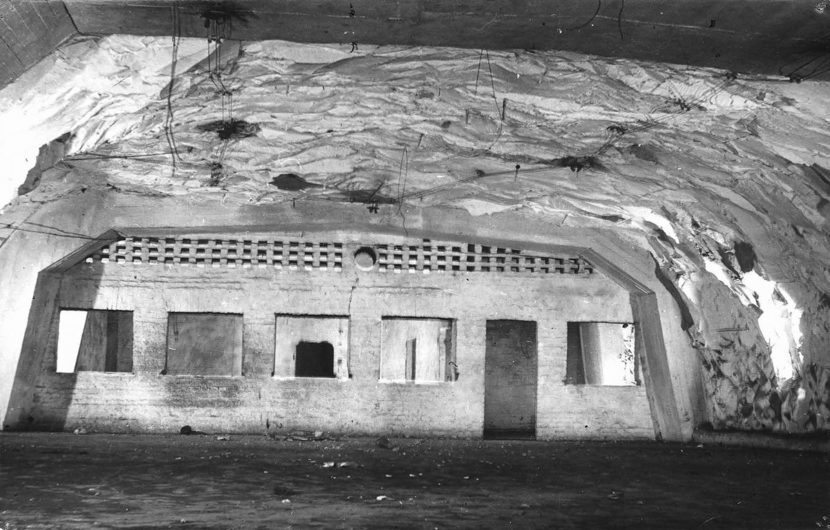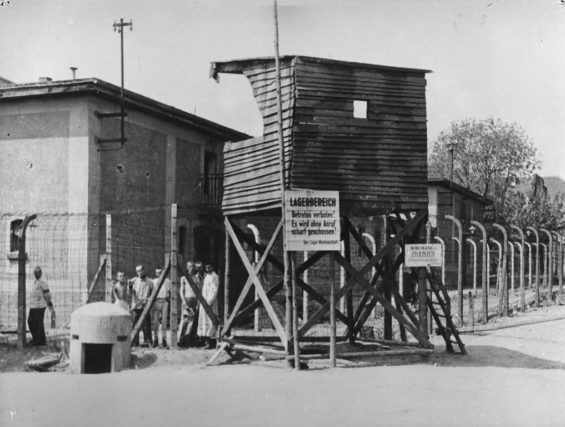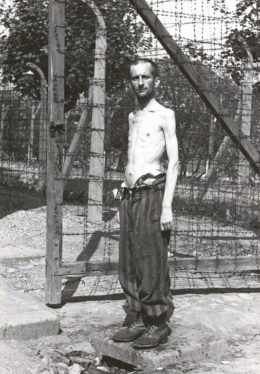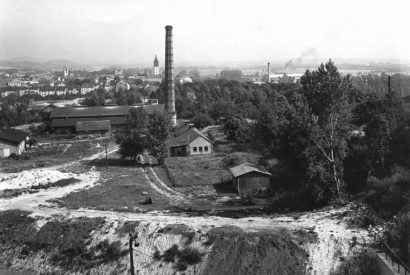Leitmeritz (Litoměřice) Subcamp
March 24, 1944 – May 8, 1945
Codenames: "B 5", "Richard", "Elsabe"
![]()
View of the underground relocation project, "Richard," without date (Theresienstadt Memorial, Terezín). The planned completion was scrapped due to the war situation. The machines were transferred to the subcamp Hersbruck.
![]()
Watchtower at the prisoner camp in Leitmeritz, 1945 (Theresienstadt Memorial, Terezín)
![]()
Prisoner of the subcamp Leitmeritz shortly after the liberation, 1945 (Theresienstadt Memorial, Terezín)
![]()
View of the crematorium in Leitmeritz, 1945 (Theresienstadt Memorial, Terezín). Due to the high death toll, the SS erected a crematorium in a brickworks factory.
-
Prisoners
In total over 16,000 prisoners, including 700 women. The largest group by far was Polish, along with numerous Soviet, German, Hungarian, French, Yugoslavian, and Czech prisoners. About a quarter of them were Jewish. At the end of April, there were 9,000 male prisoners in Leitmeritz.
-
Forced labor and quarters
An advance detail was quartered in the ‘small fortress’ at Theresienstadt and built quarters in a garrison base at Leitmeritz. The prisoner camp was continually enlarged within the base grounds and guard towers were built.
-
Most of the prisoners were forced to perform extremely arduous construction work: for the Elsabe AG, a front company of the Auto-Union, they built an underground factory where tank engines were manufactured (“Richard I”). From November 1944, prisoners manufactured the first engines. In a smaller tunnel system, called “Richard II”, prisoners for a front company of Osram built underground areas for filament production, which was however scrapped. Towards the end of the war, with the camp overcrowded, scores of prisoners were forced to spend the night outside and in the tunnels.
-
Guards
Between 250 and 300 soldiers of the air force. Some of the detail leaders, protective custody camp leaders, and the “camp police,” comprised of prisoners, were feared for their violence.
-
Death toll
An estimated 4,500 dead. Many died in the winter of 1944 as the result of a dysentery epidemic. In March 1945, transports with 1,200 ill prisoners were sent to Bergen-Belsen.
-
Disbanding of the camp / end of the war
Towards the end of the war, Leitmeritz was the destination of numerous evacuation transports and death marches. The disbanding of the camp began at the end of April 1945. From May 6 to 8, 1945, the prisoners were released in groups; 1,200 ill prisoners remained and were liberated by the Red Army on May 9 - 10.
-
Commemoration
A large sculpture and numerous commemorative plaques in the former camp crematorium. At the Theresienstadt Memorial, there is a permanent exhibition on the relocation of manufacturing facilities underground, the “Richard” operations.



